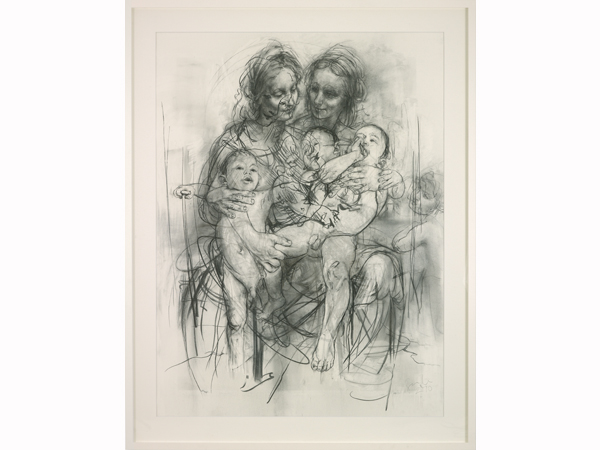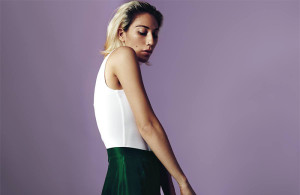For those used to her monumental paintings, Jenny Saville’s exhibition at Modern Art Oxford might come as something quite unexpected. Combining a retrospective overview of her considerable output over the last 20 years with a set of new works on paper, Saville cross some unfamiliar territory indeed.

Despite this unfamiliarity, though, there is in some respects a return to first principles in these works, with their focus both on the female figure, and self-portraiture, and like much of Saville’s early paintings, there is an autobiographical impulse at work here – the subject matter being the artist’s experience of motherhood. Fortunately, we are spared any sentimentality (as if there would be any doubt). Instead, these drawings are filled with a near-feral energy that belies their source material in Renaissance nativity scenes. Where Da Vinci would present peace and serenity, Saville’s mass of lines and overlaid images creates a flurry of movement, the child wriggling and squirming in the mother’s arms, perhaps an analogue to the artist’s own experience of the (one hopes controlled) chaos of motherhood.

‘Controlled chaos’ is one of the great things about Saville’s work, particularly in this century. The earliest paintings in this show, with which she rose to prominence in the 90s, possess a much more overtly systematic quality, which seems indebted to the Slade School painters such as Euan Uglow (Saville studied briefly at the Slade herself). ‘Trace’ (1993) takes as its subject a mapping of flesh, the impressions left by removed underwear producing a contour diagram of the human body. Later works from that period such as ‘Hyphen’ and ‘Ruben’s Flap’ (both 1998-9) adopt a more complex approach to this method; repetition and division of image producing an ambiguous effect. We may be seeing the movement of a body through time, but the sheer physicality of Saville’s painting lends itself to more immediate readings of physical aberration and even conjoined twins.

These works alone are great enough, but in the broadly chronological narrative the exhibition follows, ‘Reverse’ (2002) represents a major leap forward. As a monumental self-portrait. the subject and scale are familiar but there’s a marked shift in technique; a more expressive approach in the markings and the colour palette is used. They give a new immediacy and impact to the work. It is literally magnified by the artist shifting focus from the body to the face. Death is often a presence in Saville’s work, but where her earlier works are redolent of decay, the washed-out pallor of the mortuary slab, the thick, viscous reds of ‘Reverse’ are death of another order, more vigorous, murderous, even.

From hereon critical judgment goes out the window rather. Confronted by the sheer jaw-dropping brilliance of the works on display, surely these are those of one of the greatest painters currently working? Order from chaos, beauty from ugliness; the brilliance with which Saville combines an exacting, painterly precision with a brutal, near abstract physicality has to be seen to be understood. The new pencil works are certainly great, but this exhibition leaves you hungry for more paintings from an artist at the peak of her considerable powers.
Jenny Saville is at the Museum of Modern Art, Oxford, until September 16th, 2012















